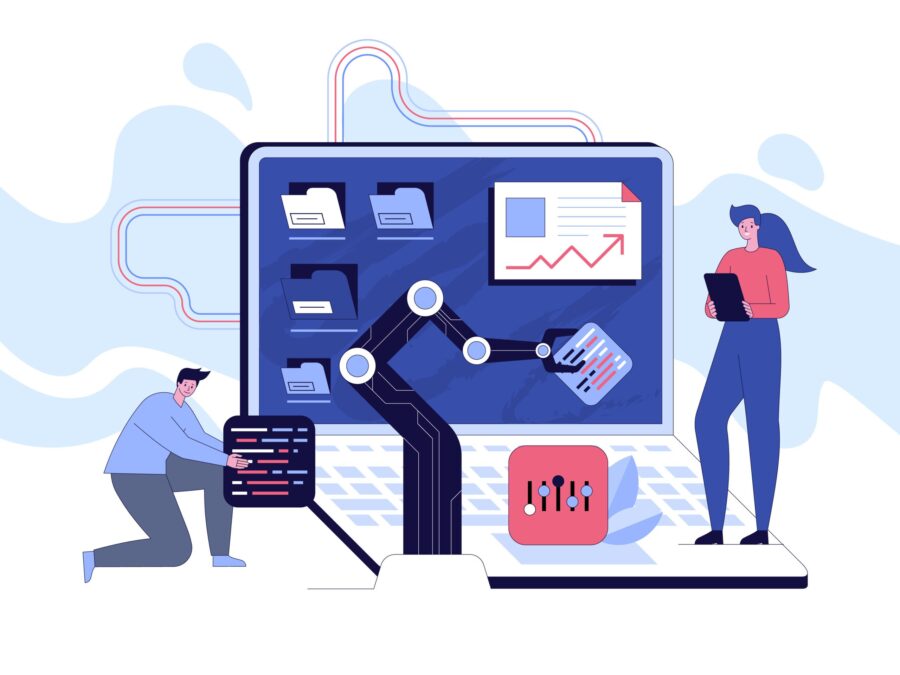
The modern digital ecosystem, buzzing with the chatter of data and algorithms, presents both promises and challenges. In this intricate web, generative artificial intelligence (GenAI) shines as a beacon of innovation. To harness this power, enterprises need more than just cutting-edge technology. They need a bridge between ambition and realization—a role aptly filled by a technical program manager (TPM).
Now is the time to harness the role of the TPM in businesses due to the ever-growing size and scope of the artificial intelligence market, which is both innovative and disruptive. GenAI is distinct in its ability to produce new content based on patterns it learns. It doesn’t simply analyze or classify; it also has the ability to create—including everything from synthesizing music and emulating artistic styles to fabricating text content.
According to a recent Markets and Markets report, the global AI market is currently valued at $150.2 billion and is expected to reach $1,345.2 billion (an 800 percent increase) by 2030. These numbers aren’t simply reflective of a tech trend. They also underscore the weaving of generative models into the very fabric of industries.
TPMs and the deployment of AI
TPMs are the perfect professionals to help take AI to the next level in business because of their vast skills in overseeing the essential components required to successfully deploy GenAI-based programs. This includes their ability to straddle everything from technical aspects and resources to the timelines and milestones of a GenAI project or program. TPMs can help with delivery and bridge the gap between a business’s technical and non-technical stakeholders. For example, one of the most significant issues with generative AI is hallucinations—when a large language model (LLM) creates false information that can appear to be true. TPMs can address these concerns by understanding the nature of temperature settings when coding, and knowing when and how to direct the technical and engineering teams to implement them. This is just one of the many issues that need to be explained to non-technical stakeholders, and TPMs are the ones who can explain things in simple language to those without engineering expertise.
The core pillars
To ensure that the work is integrated correctly, efficiently, and ethically when deploying AI, it is critical for TPMs to understand several core pillars of a GenAI framework. This means constructing a robust infrastructure rather than simply cherry-picking algorithms. The core pillars are:
- crucial for companies to succeed. A healthcare provider, for example, has myriad data—everything from member and provider data to claims, product, and communication data. How those large volumes of data are maintained is crucial to ensure the data’s quality, accuracy, and versatility. Flexibility is critical to adapting to the applications to integrate new data sources, be architecturally sound to bring in those resources, and adjust to the changes in requirements and increasing demands.
- concocting deepfakes to inadvertently fostering misinformation. Today, apps exist that can create a five-second video showing someone saying things they never said, and it’s impossible to tell that it’s a deep fake. There are also hallucinations, which bring up issues of bias and fairness in how AI responds, particularly in an industry such as healthcare, where personal identifiable information (PII), personal health information (PHI) and payment card industry (PCI) to name a few, are prevalent.
The future of GenAI in business
While remaining mindful of and addressing the potential pitfalls of GenAI, the future for this ever-evolving technology is nonetheless poised to be transformative at the outset. The possibilities are limitless in a variety of settings, including:
- higher engagement and conversion rates. It will assist with creating advertisements, articles, social media posts, and more at a more targeted and faster pace.
Harnessing TPM talents
TPMs will be on the frontlines as GenAI evolves and grows. As they continue to develop the skills required to analyze and mitigate risk, they will help implement the numerous necessary changes. TPMs will also be instrumental in using methodologies such as Agile, to ensure incremental delivery. They will also utilize their experience in end-to-end planning, deploy on time with the required guardrails in place, track metrics, and be at the forefront of communicating with technical and non-technical stakeholders.
The future is bright
Embracing GenAI means engaging with this new technology and its endless potential. It is also about understanding GenAI’s cultural, transformational impact that will allow it to be employed across multiple industries with multiple functions, including marketing, design, supply chains, and beyond. GenAI promises a world where machines aren’t just tools but collaborators. This collaboration, however, hinges on working closely with TPMs who can create meticulously crafted strategies, continuous oversight, and real-time iterations.
About the Author:
Kanamangalam Chakaravarthi “KC” Lakshminarasimham is a program director with 18 years of strategic project, program, and portfolio management experience in a variety of sectors, including finance, technology, healthcare, banking, and retail. He has led teams of project and program managers, overseeing all aspects of complex technical projects, including technology transitions, business transformations, and efficiency improvements. For more information, email [email protected].
